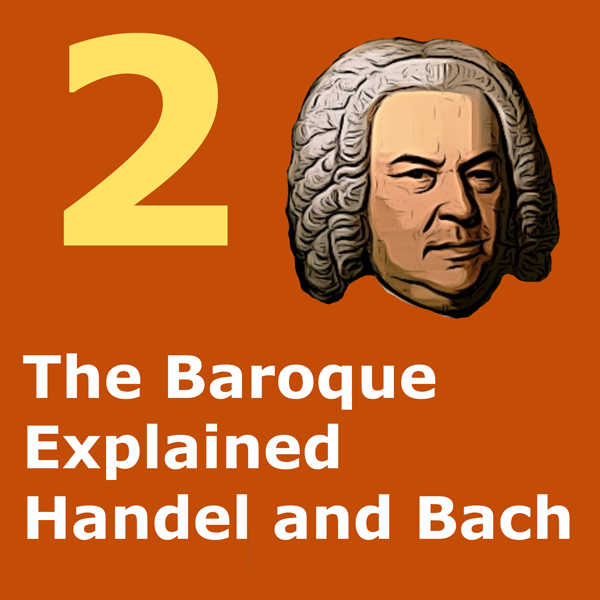
Welcome to your Listening Room
This podcast will present 2 pieces of music through which you will be introduced to 3 of the prime features of Baroque music:
- the basso continuo
- variation
- texture.
As you listen you will be asked to respond to each piece in different ways, mostly by moving, but there is one art activity for you to do and a chart you might like to download.
So, before we start,
find a fresh sheet of paper and something to draw with.
Find your chart, Have You Heard of J.S. Bach?
Your teacher may have already given you a copy but if not, you can download below and print it.
Chart: Have You Heard of J.S. Bach?
If you don’t have it, you can download it by
clicking or tapping here
Subscribe: Apple Podcast | Stitcher | Subscribe on Android | Player.fm | RSS
Spotify | Pocket Cast | Podcast Adict | TuneIn and Alexa
Fast Facts: Continuo and Variation
This piece contains 2 features of Baroque music: Basso continuo and variation.
The continuo (as it is commonly known) is a combination of low (bass) notes and chord sequences. On a harpsichord or organ the continuo is usually played by the left hand – but in this piece the chords are played by both hands at different times. In the Baroque orchestra the continuo is played by the lower instruments such as the cellos and bassoons, often in combination with the harpsichord. The continuo sets the tempo of the piece and the repetitive chord pattern provides the framework for the variations. Variations occur when a melody or theme is embellished by adding extra notes, or by changing the rhythm or the tempo.
Fast Facts: Extra Texture
Texture refers to the different layers of sound in a piece of music.
In Baroque music the three most common textures are: monophony, homophony and polyphony.
Each texture can be heard separately in the song Have You Heard of JS Bach? After listening to the examples students may like to perform a simplified polyphonic version of Have You Heard of J.S. Bach?, for which a score is provided.
Useful Information
Before the Baroque, the emphasis was on melody; composers were primarily concerned with the beauty of individual melodic lines. The sounds created when two or more melodies intersected (creating chords) were not planned, they were incidental. During the Baroque, chords became increasingly important; composers were more inclined to create music, which fitted specific chord patterns or progressions. (A chord usually consists of 3 or more notes played simultaneously).
e.g. when a guitar is strummed, different left hand finger patterns create chords; when 3 or more keys are pressed together on a keyboard this creates chords.
Basso continuo is Italian for ‘continuous bass’. In an era during which the performance of a piece was led not by a conductor but one of the musicians of the orchestra (the concert master) the basso continuo was vital in setting the tempo and thus, keeping the orchestra together.
NOTE FOR PARENTS AND CAREGIVERS:
Many of the extension activities involve links to YouTube Videos.
We try to vet the content and immediate links, but we cannot be responsible for where YouTube links may lead.
As with any internet access, you are encouraged to monitor your child’s access to the internet as appropriate.
If you find any issues with any of the links, please let us know through the contact form at the bottom of the page.
Paul Simon and Paul McCartney ripping off Bach! More about texture and a lovely performance of Handel’s Sarabande.
Tap here
Don’t miss an episode!
GET YOUR LISTENING ROOM ROOM PODCAST UPDATES VIA EMAIL
We’ll let you know via email when we release new episodes

